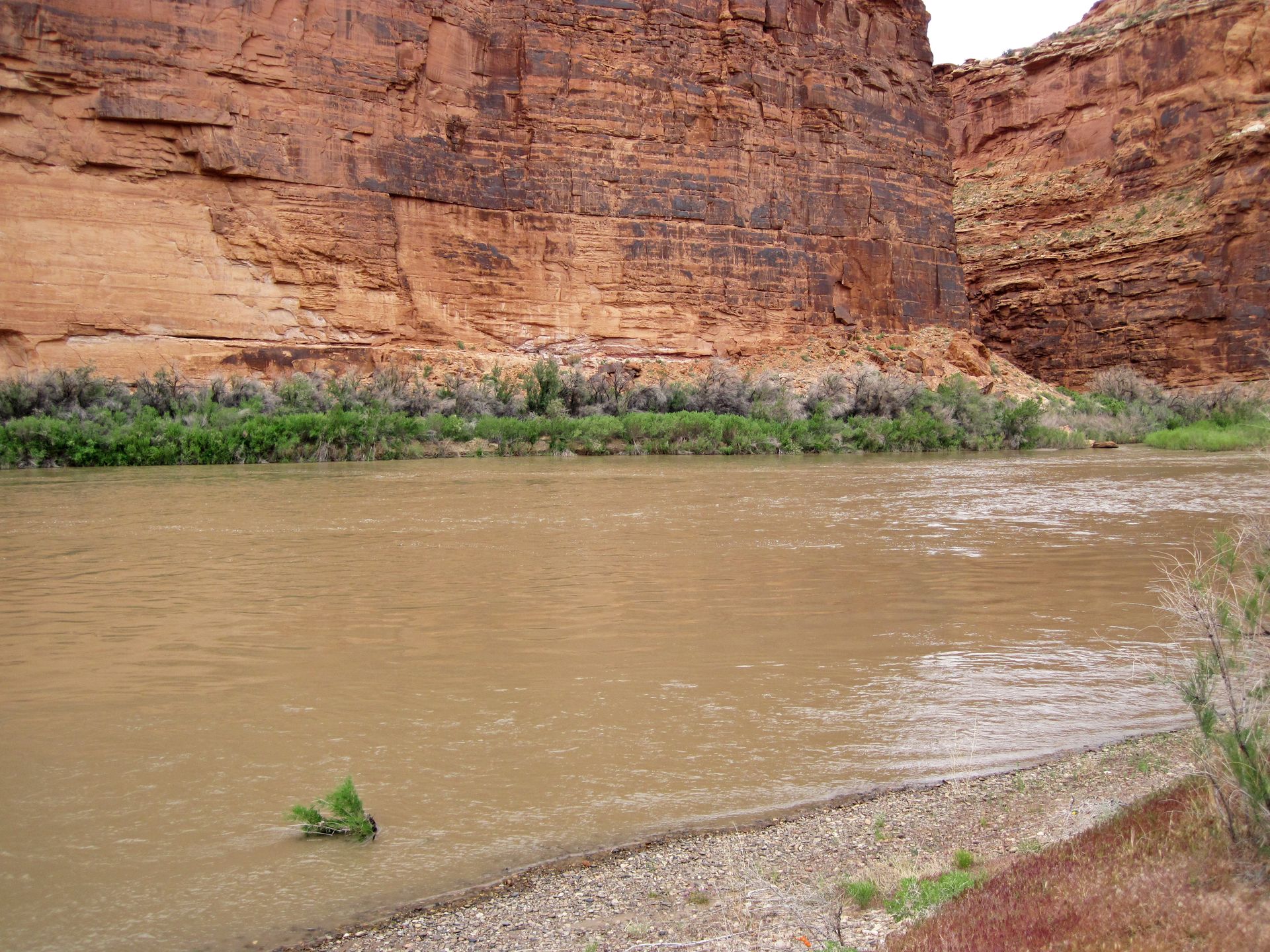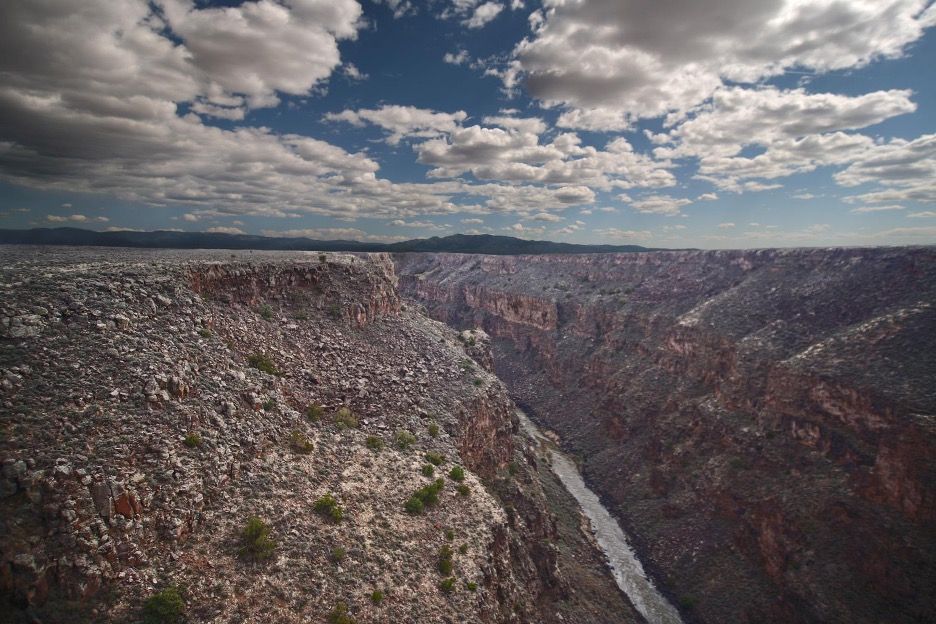A national effort to regulate water consumption is needed to ensure the upper and lower basin states are all collaboratively, and aggressively, working towards reducing both residential and agricultural water use.
The need for water conservation is growing in many areas of the world. In Amman, Jordan, it is typical for the federal government to deliver a family’s entire supply of water to their residential home once per week. Water conservation is a part of daily life in Amman. This type of federal regulation of water resources is unfamiliar in the United States; however, increasing drought may require a more pronounced federal involvement in states’ water resources, especially along the Colorado River.
The Colorado River is a critical resource to the West. The river supports seven states, Mexico, and thirty Native American tribes, supplying water to cities such as Denver, Salt Lake City, Albuquerque, Cheyenne, San Diego, and Los Angeles. Forty million people rely on the Colorado River for municipal use and irrigation. The West also relies on the river for electricity, as it produces 4,200 megawatts of electrical generating capacity. Demand for water is likely to increase alongside population growth. The number of people reliant on the river is projected to increase from forty million to 76.5 million by 2060. Unfortunately, the amount of water available in the river is decreasing due to drought driven by climate change. Since the 1900s, the Colorado River water flow has dropped by twenty percent. The regions around the river have experienced drought since 2000 and now lasting over twenty years. According to some experts, climate change will reduce snowfall and runoff, resulting in lower water levels. Snowpack ensures that the river’s water levels are replenished each year. In 2021, the federal government declared a water shortage for the first time ever at Lake Mead, a major reservoir along the river located in Nevada. Due to the shortage, Nevada and Arizona are required to cut seventeen percent of their water intake from the river. These cuts are predominately felt by farmers in both states.
The Colorado River Compact and 1944 Mexican Water Treaty
Given that the Colorado River is a shared resource, it demands an agreement to allocate water amongst several states. Unfortunately, the current agreement is one hundred years old and was written during a period of high-water levels. The 1922 Colorado River Compact (“Compact”) apportioned water between the upper basin states consisting of Colorado, Wyoming, Utah, and New Mexico, and the lower basin states consisting of Arizona, California, and Nevada. The Compact was largely a result of the rising population in California, and concern from other states that California would establish priority rights to the water in the Colorado River. Additionally, in Wyoming v. Colorado, the Supreme Court held that Colorado could not disregard Wyoming’s prior appropriation rights to the Laramie River when diverting water for its own use. This meant that prior appropriation rights could cross state lines, adding further concern to California’s growth. For the first time ever, all affected states came together to negotiate their rights to the Colorado River and created the Compact, with hopes of avoiding federal regulation and expensive litigation. Essentially, the Compact ensures that upper basin states provide lower basin states with their share of water from the Colorado River.
Twenty-two years later, the United States and Mexico passed the 1944 Mexican Water Treaty (“Treaty”). The Treaty ensures that Mexico also receives its fair share of water resources for irrigation and supply to cities such as Mexicali, Tecate, and Tijuana. These agreements dominate the law surrounding the apportionment of water in the Colorado River, but how will they stand up to decreasing supply and increasing demand?
As soon as 2025, experts predict that the lower basin states may not receive their share of water set forth in the Compact due to increasing drought. The Compact has a mechanism for protecting the lower states in this situation, namely a compact call which would force upper basin states to cut their water usage to deliver water to California, Arizona, and Nevada. To date, there has never been a compact call. To add to the problem, the Compact negotiations established fixed amounts of water using data from a year with unusually high water levels. In 1922, the Colorado River was thought to contain 17.5 million acre-feet of water a year, however, between 2000 and 2021, the river only contained 12.3 million acre-feet a year. Colorado will feel the largest impact of a compact call because it has the largest apportionment of the upper basin states. At worst, Denver could lose half of its water supply, although the city would likely reach deals with higher priority rights holders—such as farmers—in the state to meet the city’s needs. The upper and lower basin states disagree over the best ways to avoid a compact call. The upper basin states would like to see the lower basin states reduce their use of water, as the upper basin states argue they have already been absorbing water shortages. The lower basin states continue to use the same amount of water apportioned to them in 1922, even though water levels have decreased. While the lower basin states have reservoirs, the upper basin states rely primarily on snowpack to replenish their water. Unfortunately, snowpack could decrease by forty-five percent by 2050.
Possible Federal Responses to Decreasing Water Levels
Currently, water law is dictated primarily by state laws and compacts. However, a federal response is likely necessary to address the growing tensions between the basin states as water levels continue to drop. To date, deference has been given to state laws as states have more readily available information regarding their own water resources. However, the federal government—either in the form of the judiciary or the legislature—may need to step in to resolve disputes or mitigate issues brought on by climate change. The federal government has often assisted states in the negotiation of state compacts, but it is unclear if the current compacts will be sustainable in the future.
Planning and mitigation are favorable methods to addressing water shortages, as opposed to disputes requiring litigation at the Supreme Court. Federal courts have original jurisdiction to hear disputes between states. Water conservation strategies and infrastructure projects are the best options for addressing increasing demand and decreasing supply within the Colorado River. In Sporhase v. Nebraska, the Supreme Court held that interstate water resources qualify as commerce, thereby placing interstate water resources within Congress’s authority under the Commerce Clause.
Water Conservation Legislation
Congress can assist in water conservation efforts through varying forms of regulation and oversight, such as implementing a water tax or regulating agricultural and urban water consumption.
A national water tax on all water purchases may have the desired effect of improving water conservation. However, this would require an enormous amount of political capital as a water tax on residential and agricultural water use would be unpopular. Alternatively, Congress could pass legislation providing subsidies or tax credits to those who take efforts to conserve water. This type of legislation may be more politically feasible than a national water tax and may foster technological innovation. Legislation requiring effective urban planning and land use may also reduce water consumption. For example, legislation requiring high-efficiency appliances and additional regulations for new residential homes and buildings may further water conservation goals.
Federal Infrastructure Projects
In addition to passing legislation aimed at reducing nationwide water consumption, infrastructure projects can help mitigate a decreasing water supply. Investing in more water storage systems in the West will be necessary unless consumption is greatly reduced. Storage systems allow for more reuse and recycling of currently available water. Prior to the 1970s, water storage systems and construction of dams were very popular, however, development slowed due to environmental concerns and impacts on local habitats and wildlife. New storage systems will need to be smart and deliberate to meet the public’s need for water while mitigating the damage to local environments. Desalination projects may also be necessary to increase the available water supply by converting saline water into freshwater. However, like water storage systems, desalination plants negatively impact marine life. Desalination plants create brine as a byproduct, which is damaging to ecosystems. The brine sinks to the ocean floor and often contains toxic metals and chemicals. Desalination is also energy-intensive and uses fossil fuels. Desalination will require more technological innovation to reduce these harmful effects.
What should be the Federal Response?
To mitigate as much environmental damage as possible, the federal response to lowering levels in the Colorado River should revolve primarily around aggressive water conservation efforts. A national effort to regulate water consumption is needed to ensure the upper and lower basin states are all collaboratively, and aggressively, working towards reducing both residential and agricultural water use. National infrastructure projects will likely also be needed. However, reducing consumption should be the priority to limit the environmental impacts that will inevitably follow large infrastructure projects, such as water storage and desalination. At a minimum, the federal government will need to assist with state negotiations regarding the future of the Compact, as it may no longer be a feasible agreement with the continued drought in the West and the increasing challenges presented by climate change knocking at our door.
SOURCES
Caitlin Coleman, Shaped By Storage: The How and Why of Storing Water in Colorado, Water Educ. Colo. (May 25, 2021), https://www.watereducationcolorado.org/publications-and-radio/headwaters-magazine/spring-2021-storage/shaped-by-storage-the-how-and-why-of-storing-water-in-colorado/.
Colorado River Basin Water Supply and Demand Study, Exec. Summary, Bureau of Reclamation (Dec. 2012), https://www.usbr.gov/watersmart/bsp/docs/finalreport/ColoradoRiver/CRBS_Executive_Summary_FINAL.pdf.
Colorado River Compact, Water Educ. Found., https://www.watereducation.org/aquapedia-background/colorado-river-compact (last visited Feb. 9, 2022).
Colorado River Water and Mexico, Water Educ. Found., https://www.watereducation.org/aquapedia/mexico-and-colorado-river-water (last visited Feb. 9, 2022).
Colorado River, Water Educ. Found., https://www.watereducation.org/aquapedia/colorado-river (last visited Feb. 9, 2022).
Daniel Trotta, Desalination Advances in California Despite Opponents Pushing for Alternatives, Reuters (July 30, 2021), https://www.reuters.com/world/us/desalination-advances-california-despite-opponents-pushing-alternatives-2021-07-28/.
Desalination, U.S. Geological Surv. (Sept. 11, 2019), https://www.usgs.gov/special-topics/water-science-school/science/desalination.
Douglas E. Beeman, As the Colorado River Shrinks, can the Basin Find an Equitable Solution in Sharing the River’s Waters?, Water Educ. Found. (Jan. 14, 2022), https://www.watereducation.org/western-water/colorado-river-shrinks-can-basin-find-equitable-solution-sharing-rivers-waters.
Henry Fountain, In a First, U.S. Declares Shortage on Colorado River, Forcing Water Cuts, N.Y. Times (Aug. 16, 2021), https://www.nytimes.com/2021/08/16/climate/colorado-river-water-cuts.html?searchResultPosition=3.
Matt Simon, Desalination Is Booming. But What About All That Toxic Brine?, Wired (Jan. 14 2019), https://www.wired.com/story/desalination-is-booming-but-what-about-all-that-toxic-brine/.
Melissa Pawson, ‘Catastrophe’ Faces Jordan’s Water Sector as Climate Heats Up, Aljazeera (Nov. 2, 2021), https://www.aljazeera.com/news/2021/11/2/experts-warn-of-catastrophe-facing-jordans-water-sector.
Michael Elizabeth Sakas, If the Colorado River keeps drying up, a century-old agreement to share the water could be threatened. No one is sure what happens next, CPR News (Nov. 19, 2021), https://www.cpr.org/2021/11/19/colorado-river-water-compact-climate-change/.
Noah D. Hall, Interstate Water Compacts and Climate Change Adaptation, 5 Env’t & Energy L. & Pol'y J. 237, 244–46 (2010).
Robert W. Adler, Climate Change and the Hegemony of State Water Law, 29 Stan. Env’t. L. J. 1, 31-40, 49-51 (2010).
Sporhase v. Nebraska, 458 U.S. 941, (1982); Sporhase v. Nebraska ex rel. Douglas, 458 U.S. 941 (1982), Justia, https://supreme.justia.com/cases/federal/us/458/941/ (last visited Feb. 14, 2022).
Water Conservation, Water Educ. Found., https://www.watereducation.org/aquapedia/water-conservation#:~:text=Two%20laws%20enacted%20in%202018,indoor%20and%20outdoor%20water%20consumption.&text=The%20laws%20set%20an%20initial,gallons%20per%20person%20by%202030 (last visited Feb. 9, 2022).
Wyoming v. Colorado, 259 U.S. 419, (1922); Wyoming v. Colorado, 259 U.S. 419 (1922), Justia, https://supreme.justia.com/cases/federal/us/259/419/ (last visited Feb. 14, 2022).



